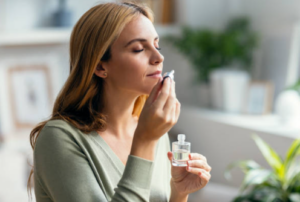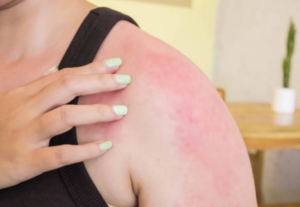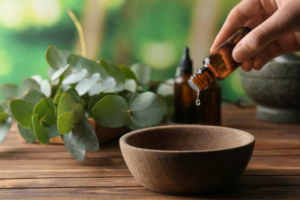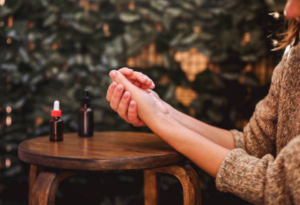Natural Remedy or Health Risk?

In recent years, essential oils have gained popularity as natural remedies for various health and beauty concerns. These concentrated plant extracts, known for their aromatic properties, have been used for centuries in traditional medicine and aromatherapy. However, the rising popularity of essential oils has sparked a heated debate within the health and beauty communities. Are these aromatic extracts truly the natural remedy they claim to be, or do they pose potential health risks? In this comprehensive blog, we’ll delve into the controversy surrounding essential oils, exploring their origins, benefits, potential drawbacks, and the scientific evidence behind their use.
To understand the controversy surrounding essential oils, it’s crucial to explore their origins and historical uses. Essential oils are derived from various parts of plants, including flowers, leaves, stems, bark, and roots. The extraction methods involve steam distillation, cold pressing, or solvent extraction, resulting in highly concentrated and potent liquids that capture the plant’s fragrance and therapeutic properties.
Historically, essential oils have been used in traditional medicine, perfumery, and religious ceremonies across different cultures. Ancient civilizations, including the Egyptians, Greeks, and Romans, valued these aromatic extracts for their healing properties and believed in their ability to promote physical and mental well-being.
Benefits of Essential Oils
Proponents of essential oils tout their numerous benefits, advocating for their use in aromatherapy, skincare, and natural health remedies. Here are some common claims regarding the positive effects of essential oils:
- Aromatherapy: Essential oils are frequently used in aromatherapy to promote relaxation, reduce stress, and improve mood. Different scents are believed to have distinct effects on emotions and mental well-being.
- Skincare: Many beauty enthusiasts incorporate essential oils into their skincare routines, attributing benefits such as anti-inflammatory, antimicrobial, and antioxidant properties. Some oils are believed to help with acne, fine lines, and other skin concerns.
- Natural Remedies: Essential oils are often suggested as natural remedies for a variety of health issues, including headaches, muscle aches, insomnia, and respiratory problems. Advocates claim that these oils can offer relief without the side effects associated with pharmaceutical drugs.
- Cleaning Products: Due to their antimicrobial properties, essential oils are sometimes used in natural cleaning products as an alternative to synthetic chemicals. Oils like tea tree and lavender are believed to have antibacterial and antifungal effects.
Controversies and Health Risks
While essential oils have their proponents, skeptics raise concerns about their safety and potential health risks. It’s essential to examine the controversies surrounding essential oils to make informed decisions about their use. Here are some of the key issues:
- Skin Sensitization and Irritation:
Undiluted Application: One of the primary concerns with essential oils is the potential for skin irritation when applied undiluted. Some oils, such as cinnamon, clove, and oregano, are known to be particularly harsh and can cause irritation, redness, or even chemical burns on the skin.
Phototoxicity: Certain citrus oils, like bergamot, lime, and grapefruit, contain phototoxic compounds that can increase sensitivity to sunlight. Applying these oils to the skin and then exposing the treated area to sunlight may result in severe burns or pigmentation changes.
- Respiratory Issues:
Inhalation Risks: Inhaling essential oils, whether through diffusers or direct inhalation, can pose risks, especially for individuals with respiratory conditions. The fine particles of the oils can irritate the respiratory tract, potentially triggering coughing, shortness of breath, or aggravating pre-existing respiratory issues like asthma.
- Toxicity:
Ingestion Dangers: Ingesting essential oils is a controversial practice that carries significant risks. Essential oils are highly concentrated, and some contain compounds that can be toxic when consumed. Ingestion can lead to symptoms such as nausea, vomiting, and abdominal pain. In severe cases, it may result in organ damage or other serious health complications.
- Quality and Purity Concerns:
Adulteration: The essential oil market is rife with adulterated products. Some oils may be diluted with carrier oils or synthetic compounds, compromising their purity and efficacy. This lack of quality control raises concerns about the safety and authenticity of essential oils available in the market.
Contamination: Poor sourcing and manufacturing practices can lead to contamination of essential oils with pesticides, heavy metals, or other harmful substances. Users may unknowingly expose themselves to these contaminants, undermining the perceived health benefits of essential oils.
- Effectiveness and Lack of Regulation:
Limited Scientific Validation: While some studies support the benefits of certain essential oils, the overall body of scientific evidence is still limited. Critics argue that many therapeutic claims lack rigorous scientific validation, making it challenging to assess the true effectiveness of essential oils for specific health or beauty concerns.
Marketing Misleading Claims: The lack of strict regulations in the essential oil industry allows for the proliferation of misleading marketing claims. Consumers may be swayed by promises that are not backed by scientific evidence, leading to potential disappointment and skepticism.
- Allergic Reactions:
Individual Variability: Essential oils contain complex mixtures of compounds, and individuals may react differently to specific oils. Allergic reactions, ranging from mild skin irritation to more severe responses, can occur. It’s essential for users to be aware of their own sensitivities and perform patch tests before widespread application.

- Pediatric and Pregnancy Concerns:
Limited Safety Data: The safety of essential oil use in infants, young children, and pregnant women is a subject of ongoing research. Due to the potential for toxicity and skin sensitivity, caution is advised when using essential oils in these populations. Some oils may have adverse effects on hormone balance and fetal development.
Scientific Evidence and Research
To better understand the controversy, it’s essential to examine the scientific evidence supporting or refuting the claims about essential oils. While research on essential oils is ongoing, some studies have provided insights into their potential benefits and risks:
- Aromatherapy and Mental Health: Several studies suggest that certain essential oils, such as lavender and peppermint, may have positive effects on mood and mental well-being. Aromatherapy has been linked to reduced anxiety and improved sleep in some individuals.
- Antimicrobial Properties: Some essential oils exhibit antimicrobial properties, making them effective against bacteria, viruses, and fungi. Tea tree oil, for example, is known for its antibacterial and antifungal effects.
- Skin Health: Research indicates that certain essential oils, like tea tree and chamomile, may have anti-inflammatory and wound-healing properties. However, caution is advised, as undiluted oils can cause skin irritation.
- Respiratory Effects: While inhaling essential oils can have positive effects on mood, there is also evidence that it may trigger respiratory irritation, especially in individuals with respiratory conditions.
- Quality and Purity Concerns: Studies have highlighted the variability in the quality and purity of commercially available essential oils. Adulteration and contamination with synthetic compounds are common issues, emphasizing the importance of choosing high-quality products.

Tips for Safe Essential Oil Use
If you choose to incorporate essential oils into your beauty and wellness routine, it’s crucial to do so safely. Here are some tips to ensure a positive and risk-free experience:
- Dilution Guidelines:
Carrier Oils: Before applying essential oils to the skin, it’s crucial to dilute them with a carrier oil. Common carrier oils include jojoba, sweet almond, or coconut oil. This not only reduces the risk of skin irritation but also helps spread the essential oil over a larger surface area.
Dilution Ratios: Follow recommended dilution ratios, typically ranging from 1% to 3%, depending on the oil and the intended use. For example, one drop of essential oil per teaspoon of carrier oil is a common starting point.
- Patch Testing:
Before Application: Perform a patch test before applying a new essential oil to a larger area of skin. Apply a small amount of diluted oil to a discreet patch of skin, such as the inner forearm, and observe for any adverse reactions over 24 hours. This helps identify potential sensitivities or allergies.
- Avoid Ingestion:
Caution with Ingestion: Ingesting essential oils should be approached with extreme caution and preferably under the guidance of a qualified healthcare professional. Most essential oils are not meant for consumption, and ingesting them can lead to adverse effects, including toxicity.
- Ventilation for Aromatherapy:
Proper Ventilation: When using essential oils for aromatherapy, ensure the space is well-ventilated. This minimizes the risk of inhaling high concentrations of volatile compounds. Use diffusers in open areas, and avoid prolonged exposure, especially in enclosed spaces.
- Individual Sensitivities:
Know Your Sensitivities: Individuals may react differently to various essential oils. Be aware of personal sensitivities and allergies. If you have a known sensitivity to a particular plant or tree, exercise caution when using oils derived from related species.
- Quality Assurance:
Choose Reputable Brands: Select essential oils from reputable brands that prioritize quality and purity. Look for oils that undergo third-party testing, and check for certifications from organizations such as the International Organization for Standardization (ISO) or the National Association for Holistic Aromatherapy (NAHA).
Research the Source: Understand the sourcing practices of the brand. Oils derived from organically grown or sustainably harvested plants are generally preferred. Avoid oils that may be sourced from plants treated with pesticides or other harmful chemicals.
- Educate Yourself:
Research Oils: Familiarize yourself with the properties of specific essential oils before use. Some oils are phototoxic, while others may have contraindications for certain medical conditions. A basic understanding of the chemical composition and potential effects of each oil can guide safe usage.

Be Informed About Blending: Learn about the art of blending essential oils. Combining oils can enhance their therapeutic properties, but it requires knowledge of each oil’s characteristics. Understanding the synergy between different oils allows for the creation of effective and safe blends.
The controversy surrounding essential oils stems from the conflicting views on their benefits and potential health risks. While some individuals swear by the therapeutic properties of these aromatic extracts, others approach them with skepticism, citing concerns about safety, efficacy, and the lack of regulation in the industry.
It’s essential for consumers to approach essential oils with caution, conducting thorough research and considering individual health factors. The science behind essential oils is evolving, and ongoing research may provide more clarity on their mechanisms of action and potential applications.
Ultimately, whether you choose to embrace essential oils as part of your beauty and wellness routine or remain cautious, informed decision-making is key. By understanding the controversies, weighing the evidence, and practicing safe use, individuals can make choices that align with their preferences and values while prioritizing their well-being.

